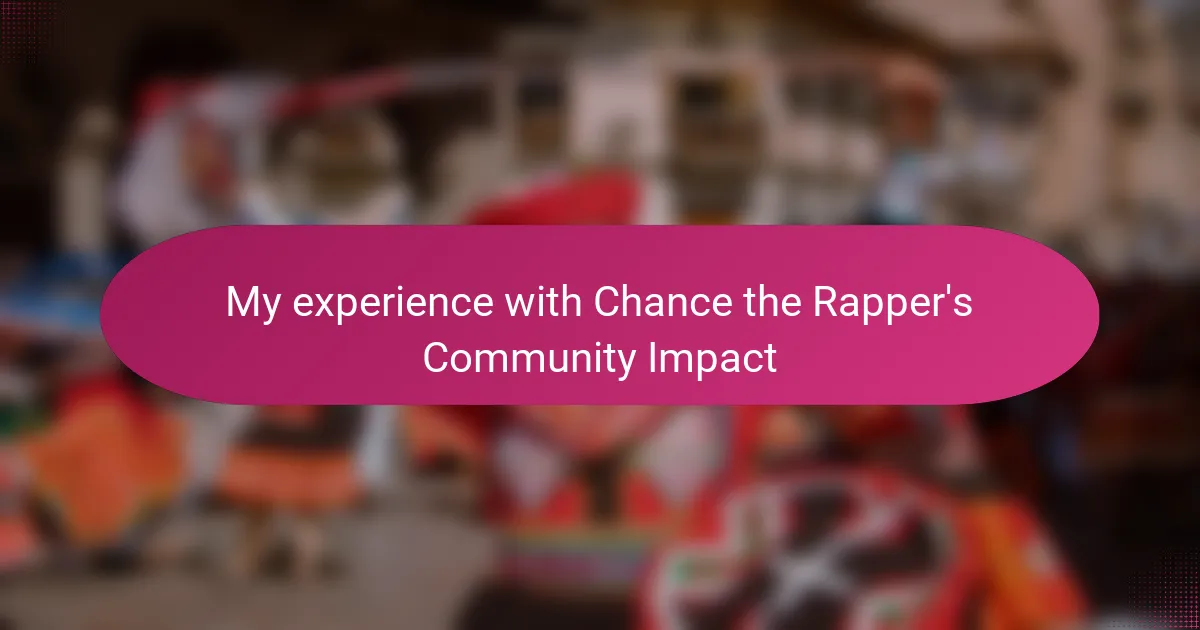Key takeaways
- Rap music serves as a powerful voice for real-life struggles, inspiring change and community engagement.
- Chance the Rapper exemplifies how independent artists can create significant social impact by prioritizing community over profit.
- His commitment to education, mental health awareness, and youth empowerment showcases the positive influence artists can have on their communities.
- Successful community projects in rap music require ongoing involvement and collaboration with local organizations to foster genuine connections and support.
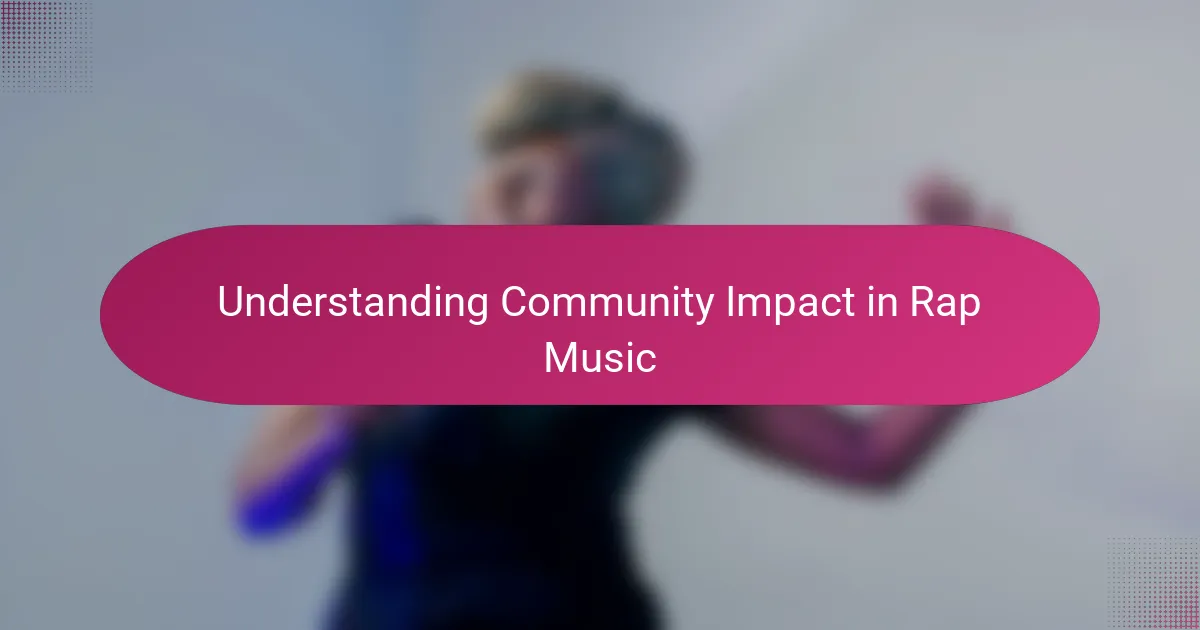
Understanding Community Impact in Rap Music
When I think about community impact in rap music, it’s clear that the genre is more than just entertainment—it’s a voice for real-life struggles and hopes. Rap artists often reflect their neighborhoods, bringing attention to issues that might otherwise be ignored. Have you ever noticed how a powerful verse can make you feel connected to a place or people you’ve never met? That’s the magic of community influence in hip-hop.
From my own experience, rap has this unique power to inspire change. It doesn’t just tell stories; it motivates listeners to think critically about their environment and sometimes even act. I remember hearing songs that challenged me to look beyond myself and consider how I could contribute to my own community’s growth. This personal connection is exactly why community impact is so vital in rap music.
Isn’t it fascinating how this form of music can turn individual pain into collective strength? When artists like Chance the Rapper use their platform to uplift neighborhoods and fund local programs, it shows the hopeful side of hip-hop. It reminded me that rap’s roots lie in connection and empowerment, which continues to resonate deeply with fans worldwide.
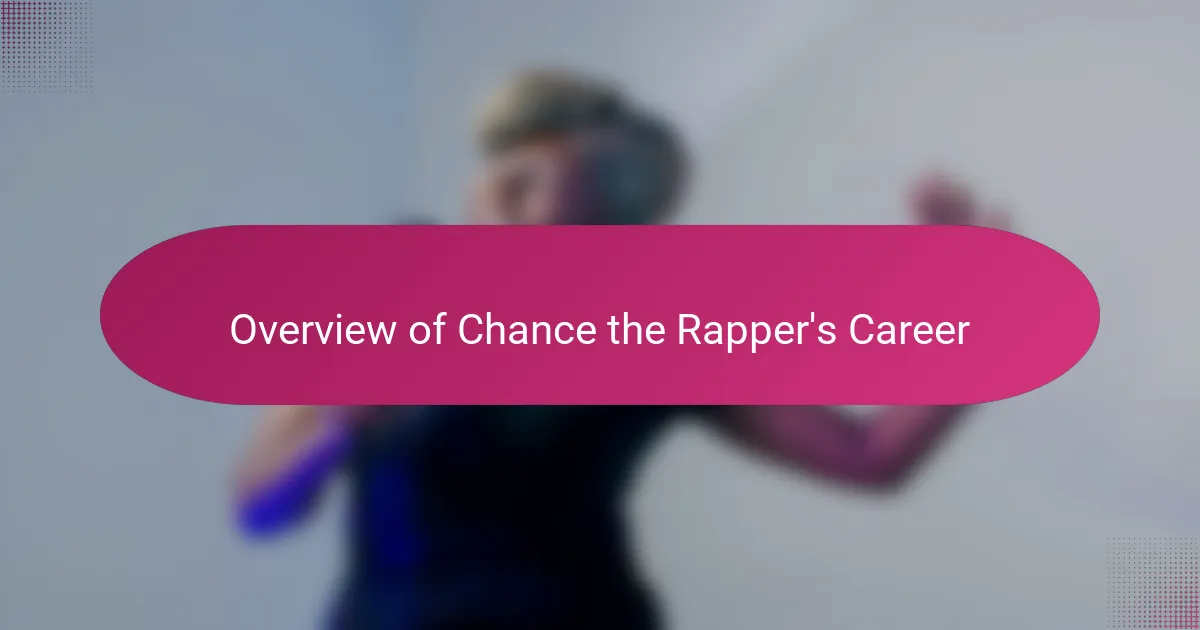
Overview of Chance the Rapper’s Career
Chance the Rapper’s career is a testament to how an independent artist can redefine success in the music industry. I’ve always admired how he chose to release his music for free, prioritizing connection over commercial gain. This approach felt refreshing to me—it’s as if he was saying, “My art belongs to the people first.”
His rise wasn’t overnight but steady, moving from local mixtapes to worldwide recognition. I remember when I first heard Acid Rap; it struck me as both joyful and deeply reflective, capturing the essence of Chicago’s streets with honesty. It made me think about how a mixtape could carry so much weight emotionally and socially.
What stands out most to me about Chance is his ability to blend [censured], social issues, and uplifting messages without losing authenticity. His career isn’t just about chart positions or awards—it’s about creating lasting impact. Have you ever wondered how some artists manage to stay true to their roots while growing so big? Chance is a clear example of that balance in action.
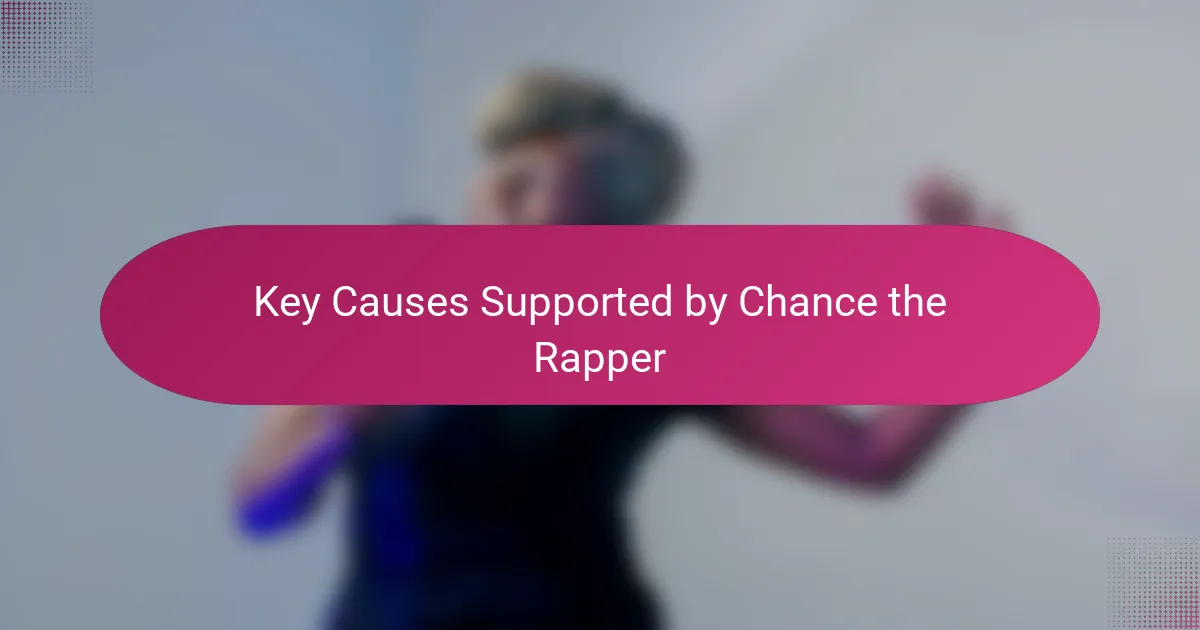
Key Causes Supported by Chance the Rapper
Chance the Rapper’s dedication to education has always struck me deeply. He launched a fund that helped Chicago schools receive millions in funding, and hearing about that made me realize how an artist’s influence can go far beyond music. Have you ever thought about how one person’s commitment to learning can ripple through an entire community?
Another cause close to Chance’s heart is mental health awareness, especially among young Black men. I remember reading interviews where he openly discussed his own struggles, which made me appreciate the courage it takes to break such stigmas. Isn’t it powerful when a star you admire uses their voice to normalize conversations that are often silenced?
What really resonates with me though is Chance’s focus on youth empowerment and providing platforms for those often overlooked. From supporting arts programs to backing social justice initiatives, he’s actively building spaces where young people can thrive. It made me ask myself: how can I contribute to creating more opportunities in my own community?
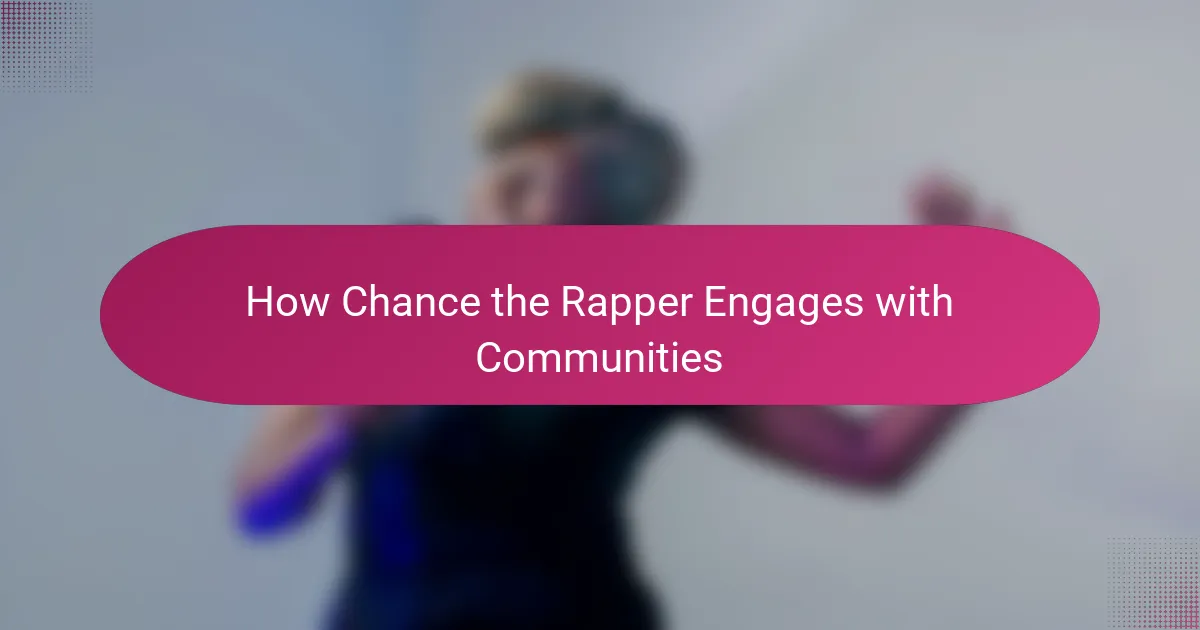
How Chance the Rapper Engages with Communities
Chance the Rapper’s way of connecting with communities goes beyond just words; it’s a genuine, hands-on involvement. I’ve noticed how he often shows up for local events in Chicago, not as a celebrity, but as someone who truly cares. That kind of presence makes me wonder—how many artists actually take the time to build those real, face-to-face relationships?
What impresses me most is how Chance leverages his platform to support grassroots efforts. For example, his funding of Chicago public schools isn’t just a one-time donation—it’s a consistent push to create lasting change. It made me reflect on how influential figures can use their success to open doors for others, rather than just spotlighting themselves.
Chance’s engagement feels personal, like he’s part of the community, not apart from it. I recall hearing about how he mentors young creatives and amplifies voices that might otherwise go unheard. Isn’t that what true community involvement looks like—lifting others up while staying grounded yourself?
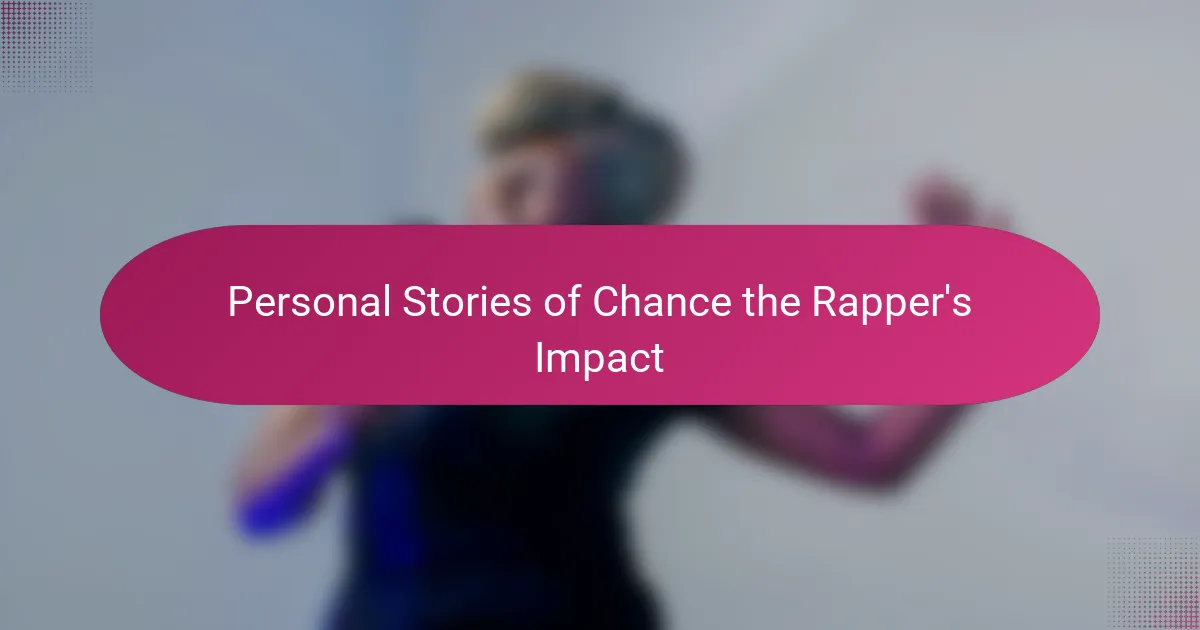
Personal Stories of Chance the Rapper’s Impact
I remember the first time I saw how Chance’s impact stretched beyond music—it was through a story a friend shared about her school receiving new art supplies thanks to his donations. It struck me how his generosity translated directly into someone’s daily life, making dreams a bit more tangible. Have you ever experienced a moment where you realized an artist you admire was actually changing real lives?
Another unforgettable experience came during a local event Chance attended in Chicago, where I witnessed his genuine interaction with fans and community members. It wasn’t just a brief photo opportunity; he listened, laughed, and encouraged young people to pursue their passions. That sincerity made me think: what if more artists stepped down from the stage to stand alongside their communities like this?
One personal story that stays with me is when a young rapper I know said Chance inspired him not just musically, but socially—to give back and lead positive change. Hearing that made me reflect on the ripple effect one artist’s commitment can have, sparking hope and action in others. Isn’t it amazing how influence isn’t just about fame, but about the lives you touch along the way?

Lessons from Chance the Rapper’s Community Work
Chance the Rapper’s community work teaches me the power of consistent, authentic giving. It’s not about grand gestures once in a while, but about showing up regularly and making sure support reaches the people who need it most. Have you ever noticed how lasting change often comes from those steady, behind-the-scenes efforts rather than flashy activism?
Another lesson I take from Chance is how vulnerability can strengthen community bonds. By openly sharing his own struggles with mental health, he breaks down walls and invites others to do the same. That kind of openness made me think—what if more artists used their platforms not just to entertain, but to heal and connect on a deeper level?
Finally, Chance’s example reminds me that true impact blends creativity with responsibility. He uses his music and fame not just to succeed personally but to build opportunities for others. It’s inspiring to see how one person’s commitment can spark a whole movement of empowerment. Doesn’t that make you wonder how you could harness your own talents to make a difference?
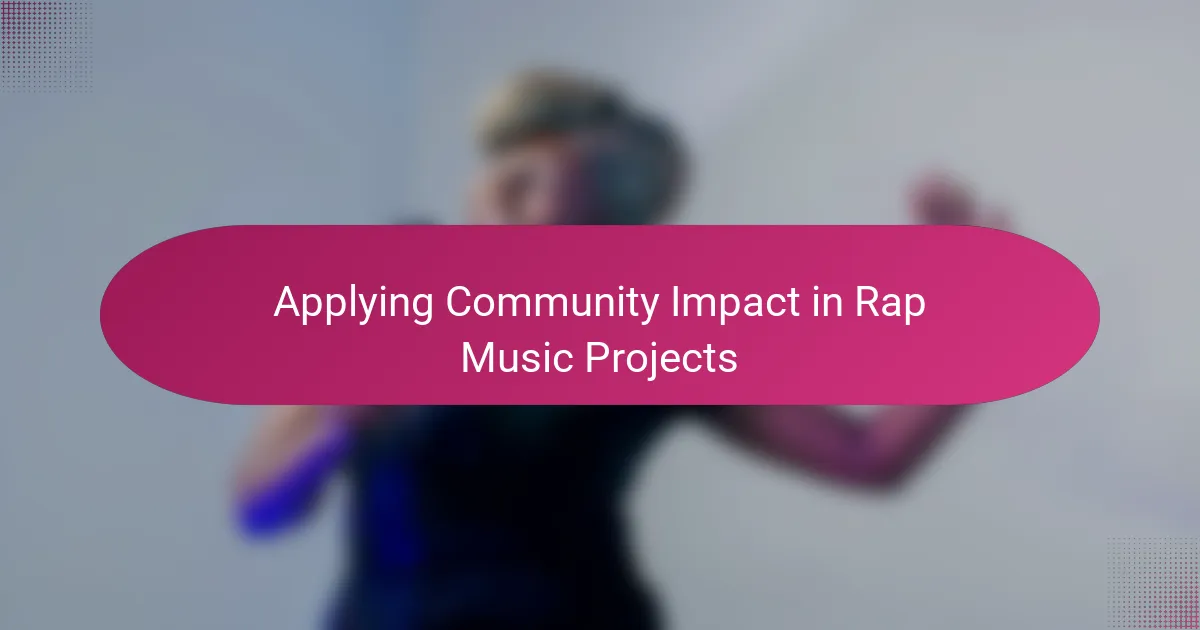
Applying Community Impact in Rap Music Projects
Applying community impact in rap music projects means weaving real-life stories and local struggles into the creative process. I’ve found that grounding a project in the community’s needs makes the music resonate on a deeper level—listeners don’t just hear beats and rhymes; they feel understood and empowered. Have you ever worked on a project where the outcome felt bigger than just music? That’s the kind of connection I think about when community impact is genuinely applied.
One approach I’ve seen—and tried myself—is collaborating directly with local organizations or youth groups to shape the themes and even the production of an album. This involvement turns listeners into participants, giving the music a shared purpose beyond entertainment. For me, the moment when art turns into action is where its true power lies.
It also means artists must commit to showing up consistently, not just dropping an album and disappearing. From my experience, the most effective projects include ongoing support—whether through workshops, funding, or mentorship—that helps communities grow alongside the music. Isn’t that the kind of lasting bond every artist should strive to build?
